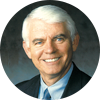The span of 25 years takes us back to 1983. Since history unfolds in a continuous fashion, selecting a specific chunk of time fails to capture the full course of events leading up to what might be considered the most "significant" event.
1. The Council on Chiropractic Education (CCE) was recognized by the U.S. Department of Education, which led to the following:
- All chiropractic programs in the U.S. achieved and adhered to a common set of educational standards for their DC curriculum.
- The chiropractic profession finally decided to support a single programmatic accreditation agency.
- Following the CCE-U.S. example, other CCEs were established in Europe, Canada and Australia.
- The Council on Chiropractic Education International (CCEI) was established to bring about the creation of a Model Set of Core Standards for all chiropractic programs worldwide and to assist in the development of CCEs in other areas of the world.
2. We achieved a critical mass of DCs trained at the master's and PhD levels to conduct research, resulting in:
- Having a research component in the curriculum of every DC program with an individual teaching who has proper credentials.
- Obtaining federal money to support chiropractic research in the U.S. and Canada.
- Having DCs hold significant positions within the NIH infrastructure.
- Holding an annual conference for chiropractic research that attracts around 400 participants.
- Continuing to grow the critical mass of research-trained DCs through such programs as the FCER Fellowship program and NIH training grants.
- Moving toward evidence-based education and practice.
- Establishing DC/PhD faculty as chairs of research departments in universities.
- Participating in and producing the reports of both the Low Back Pain Task Force and the BJD Task Force on Neck Pain and Its Associated Disorders.
- Scientific publications in the JMPT and other journals, as well as in various medical journals.
- An increase in the number of textbooks achieving high academic standards and being published by world-class publishing houses.
- Through research, partially done within chiropractic, spinal manipulation has been moved from being quackery to mainstream health care.
3. Growth and recognition of chiropractic occurred on a worldwide basis, generating such wide-reaching effects as:
- A proliferation of chiropractic programs in numerous countries outside of North America.
- Recognition of chiropractic and associated education standards by the WHO.
- The establishment and recognition of international organizations such as the WFC, the CCEI and the international testing arm of the NBCE.
- University-based chiropractic educational programs.
- An increasing number of countries accepting and recognizing chiropractic as a legal entity.
4. Chiropractic services were included, at least to some degree, in the U.S. Armed Forces Military Health System and the Veterans Health Care System. This has involved:
- Providing chiropractic services to all active duty personnel.
- Providing chiropractic services at the Bethesda Naval Hospital and in a clinic inside the National Capital Building, making such services available to senators, congressmen, their staff and high-ranking military officials.
- Establishing academic affiliations between chiropractic programs and selected VA hospitals for the purposes of conducting research and training new graduates.
- Continuing legislative efforts to expand chiropractic services to all active-duty personnel, dependents, retired personnel, and those serving in the National Guard and other military-reserve capacities.
- Continuing legislative efforts to obtain commissioning of DCs as officers in the military.
We have failed to measure up to the challenge and opportunity presented in one major area: achieving some form of unity within the chiropractic profession. While many attempts have been made, some nearly successful, the chiropractic profession has yet to dissolve the division that seems to hover over philosophical and clinical scope-of-practice issues.
This fragmentation has contributed to the dissipation of effort and energy throughout the profession. Conflicts in legislative positioning, arguments over educational standards, pushing opposing bills on scope of practice in front of decision-makers in our legislative halls, and arguing over what should and should not be covered by third-party payers have confused the ranks and obstructed progress. It is little wonder a great percentage of the profession refuses to subscribe to any national or state organization. They don't want to engage in what appears to be an endless and fruitless debate.
Until we are able to present chiropractic as a unified profession, we will continue to fall short in obtaining deference and respect from those who make the decisions over issues of scope of practice, funding for services rendered, research grants and expansion of privileges. How much have we lost and how much will we yet lose if we continue, as Dr. Janse would say, our internal "tribal divisiveness"?
The Future
What lies ahead? In this world of chaotic and rapid change, it is nearly impossible to render any accurate description of the future. The safest is to assume a pluralistic posture. Chiropractic will be many things to many people in many different settings; from single, stand-alone offices to a health care team in a large, tertiary, health care facility. It will be provided by commissioned officers, scientist-clinicians on a multidisciplinary team or individual doctors linked to a Web site that feeds evidence-based information for instantaneous decision-making.
Spinal manipulation is an art that has found a niche and is here to stay. It is not likely to be a privilege limited to the DC. Chiropractic, on the other hand, is faced with a very serous challenge. The future is ours to determine if we take action rather than be acted upon. The challenge is to determine what action is to be taken and who is to lead. I wonder who will make these decisions and how the actual decisions will be made.
Click here for previous articles by Reed Phillips, DC, PhD.





